When to Switch to Pull-Ups: A Potty Training Parent’s Guide
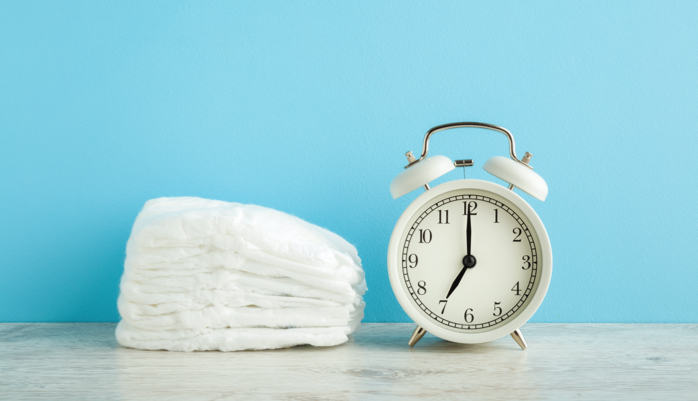
- Pull-ups are often used with children who have a greater sense of independence when it comes to using the toilet but haven’t yet mastered all of their potty training skills.
- Potty training can last several months or even years for some children, but there are signs to help you know when to switch to pull-ups.
- Pull-Ups make a great transitional tool for both parent & child, but you need to know when it’s the right time to say goodbye to the diapers.
Switching from diapers to pull-ups is one of the most exciting milestones in your child’s potty training process. However, it can also be extremely challenging for both you and your little one because not every child is open to change.
Deciding when to switch from diapers to pull-ups can be a difficult choice for any parent, but knowing what to look for can help.
Successfully making the switch to pull-ups comes down to both understanding the benefits of pull-ups and being able to interpret your child’s signs of readiness. Keep an eye on their behavior and try different approaches until you find what works best for them. The key is patience and love!
What Are Pull-Ups?
Pull-ups look very similar to underwear, but they’re thicker, more absorbent, and disposable like a regular diaper. They’re a step up from diapers in terms of transitioning your child to being fully potty trained. Potty training with pull-ups helps your child get used to accidents without making as big a mess as they would if they were wearing just underwear.
One fun element of pull-ups is that they come in a variety of styles. Your little one can take part in picking out a set in their favorite colors or ones covered in their favorite characters!
Why Use Pull-Ups?
Pull-ups are reminiscent of underwear but are more absorbent, which makes them an ideal next step when transitioning away from diapers. Like underwear or training pants, they’re also easier to pull up and down, something which can be difficult for young children when you first start potty training.
Pull-ups also look and feel more like underwear than diapers do and yet they have the familiar diaper feel. This can help your child get used to the idea of graduating from using a diaper.
Why Switch From Diapers to Pull-Ups?
In some cases, such as the super-quick 3 day potty training method or the all-in Oh Crap! method, parents want to jump from diapers straight into underwear. This is not flawed thinking, but it’s very common for children to need a transitional period when learning something new.
This is why many parents choose to switch their children from diapers to pull-ups. Switching to pull-ups gives your little one comfort by using something they’re somewhat familiar with. Change can be scary sometimes!
Signs that your child may be ready to switch to pull-ups include gesturing as if they’re asking to be changed, staying dry for at least two hours, and wearing underwear without accidents.
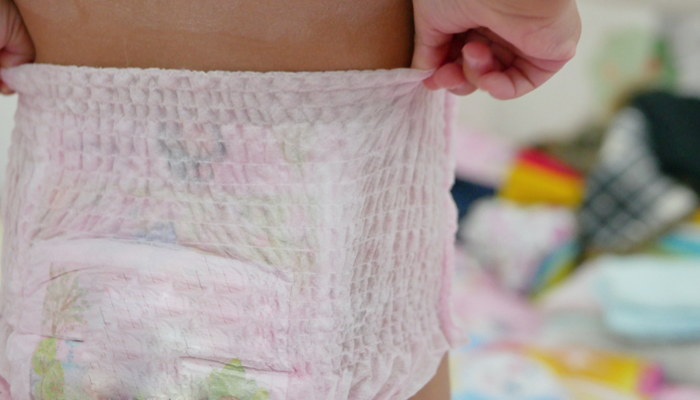
When Is The Best Age To Switch To Pull-Ups?
Generally speaking, the best potty training age when making the switch to pull-ups can come at two, three, or even four years old! The true answer, of course, depends on the individual needs of each family and their child’s developmental milestones.
Most children are ready for potty training when they can do the following:
- Get dressed with little help
- Tell you when they need to go potty
- Stay dry for hour-long stretches during the day
If your child is not quite reaching these milestones yet, then transitioning them into pull-ups may be too much of a change or distraction right now.
Instead, it’s best to continue with diapers until your little one displays a desire for more independence. Don’t worry, it will happen!
Can My Child Wear Pull-Ups at Night?
There is some divide among parents regarding whether or not to use pull-ups at night. While using pull-ups all night is completely possible, it’s important to keep in mind that some brands of pull-ups are less absorbent than diapers.
If your child wets the bed frequently, it may not be the right time to switch to pull-ups at night. If you’re confident it’s time to make the switch, finding a more absorbent brand of pull-ups might be the right move for you!
It’s best to talk with your pediatrician about whether or not transitioning into pull-ups overnight is right for you and your little one.
When Can I Stop Using Pull-Ups?
Once your child is transitioning into pull-ups, you can determine when they no longer need them by asking yourself a few questions:
- Does my child have control over their bowel movements?
- Can my child change themselves if their clothes become wet or dirty?
If the answer to either of these questions is “no” then your little one may not quite be ready! It’s important to let your child set the pace, regardless of if you feel they’re “too old” to be in pull-ups or diapers. Every child is different.
FAQs
Is switching to pull-ups confusing for my child?
As mentioned above, pull-ups make a great transitional tool when learning bladder control. While they have a similar feel to diapers, switching to pull-ups can be very helpful in allowing your child to learn how their body functions and the feeling that they need to urinate.
My child is non-verbal. How do I know they’re ready for pull-ups?
If you’re potty training a special needs child who is non-verbal or not quite verbal enough to communicate their needs properly, it is still possible to start using pull-ups! It just might look a little different, and that’s okay! It’s important that you pay very close attention to their physical cues and changes in behavior.
How do I use pull-ups?
When switching to pull-ups, you’ll want to start by taking off your child’s diaper whenever they use the potty. Once they’re done, try and slip on a pull-up and see how they react. This reaction should help gauge how receptive your child will be to the change!
The Takeaways
It’s difficult not to overthink making the switch from diapers to pull-ups. There is no such thing as a “perfect” moment; only the appropriate time for your child, and you’ll know when that arrives! Keep these key points to keep in mind as you work towards this change, and you’ll be more likely to find success!
- Don’t rush the process.
While switching to pull-ups is a great tool in the potty training process, it’s important not to rush things. Just because you’ve started using pull-ups doesn’t mean that your child has learned how their body works yet.
If your child is having problems with bladder control or struggling to pull them up and down, don’t rush to switch back to diapers! These things take time, and it’s all part of the learning process.
- Let your child set the pace.
Children thrive on routines and consistency. If something comes along to change that, it can be unsettling and confusing for them. This goes back to being patient! When your child is making the switch from diapers to pull-ups, ease them into it a little at a time.
- One day at a time!
Change doesn’t always come easy, and it surely doesn’t happen overnight. Even if your child is displaying signs of readiness, that doesn’t guarantee their openness to make the switch! Tantrums are normal, and potty training a stubborn toddler is never easy.
- Trust yourself and your child.
The fear of making the wrong choice comes up so often in parenthood. Try not to let outside pressures persuade your choices when you know your child best.
Knowing when to switch to pull-ups is a big decision for you and a big step for your child. The key thing to remember is to take it one day at a time, trust yourself, and know when enough is enough!
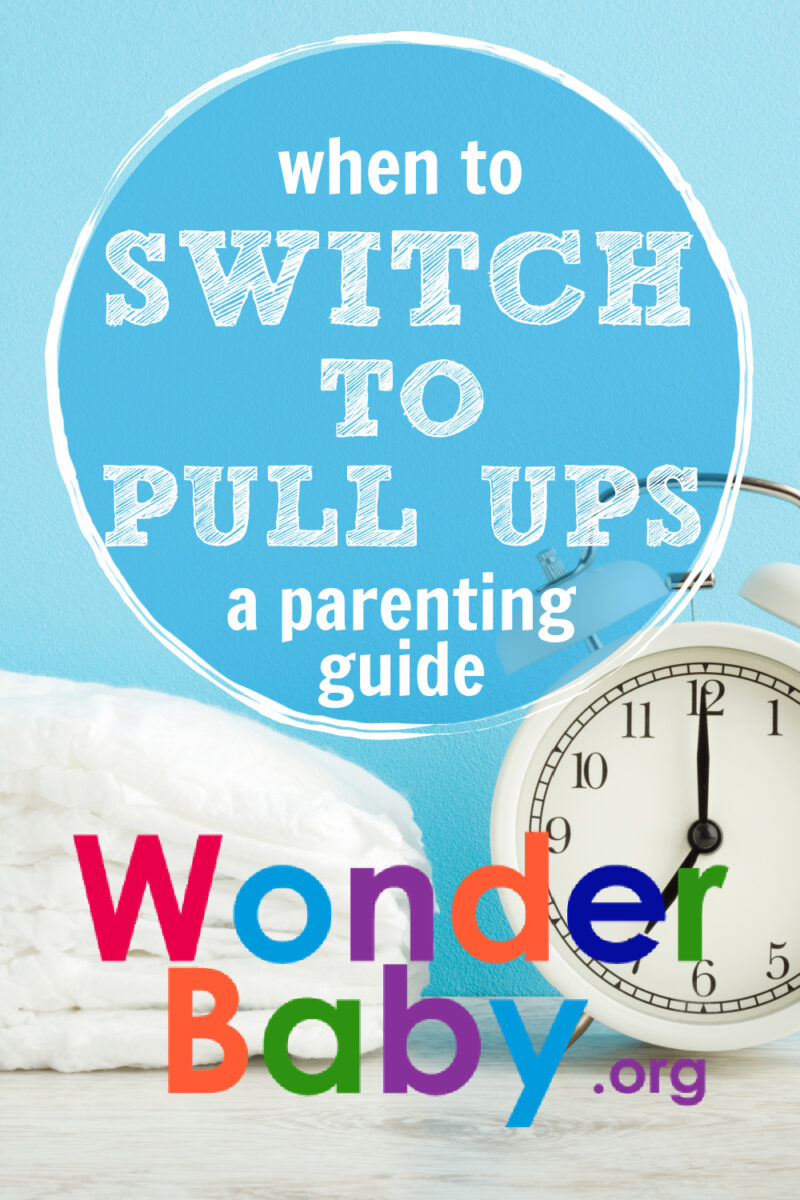
Related Posts
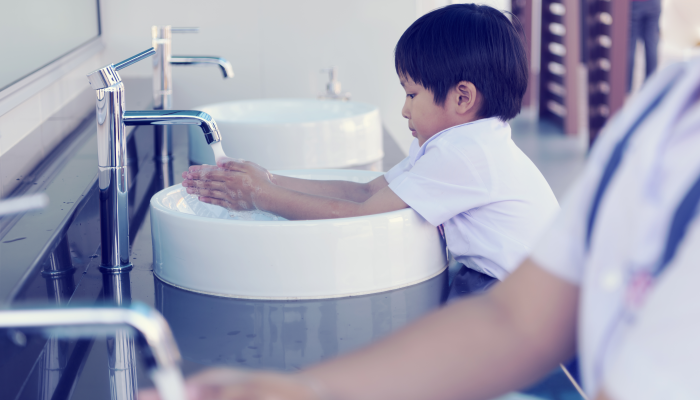
IEPs, Potty Training
7 Sample Toileting IEP Goals
Toileting IEP goals should address the specific needs and abilities of each child. Be flexible and patient as your child works on their toileting skills.
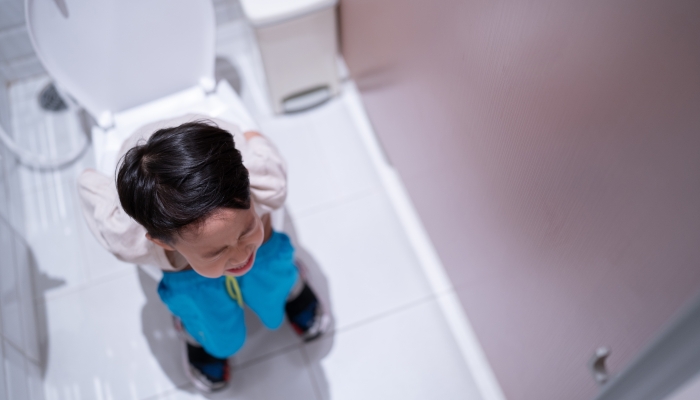
Potty Training
How To Deal With Constipation When Potty Training
Constipation is common amongst children of potty training age. Many children suffer from potty training constipation, but there are things you can do to help.
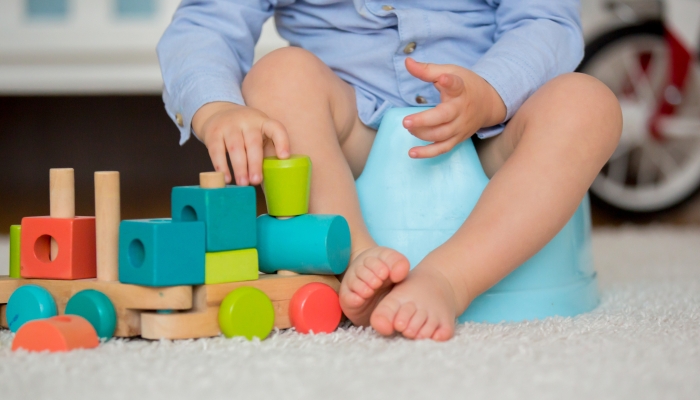
Potty Training
5 Potty Training Games To Make Potty Training Fun
Learning to use the toilet doesn’t have to feel like hard work. There are lots of potty training games you can play with your toddler to make learning fun.